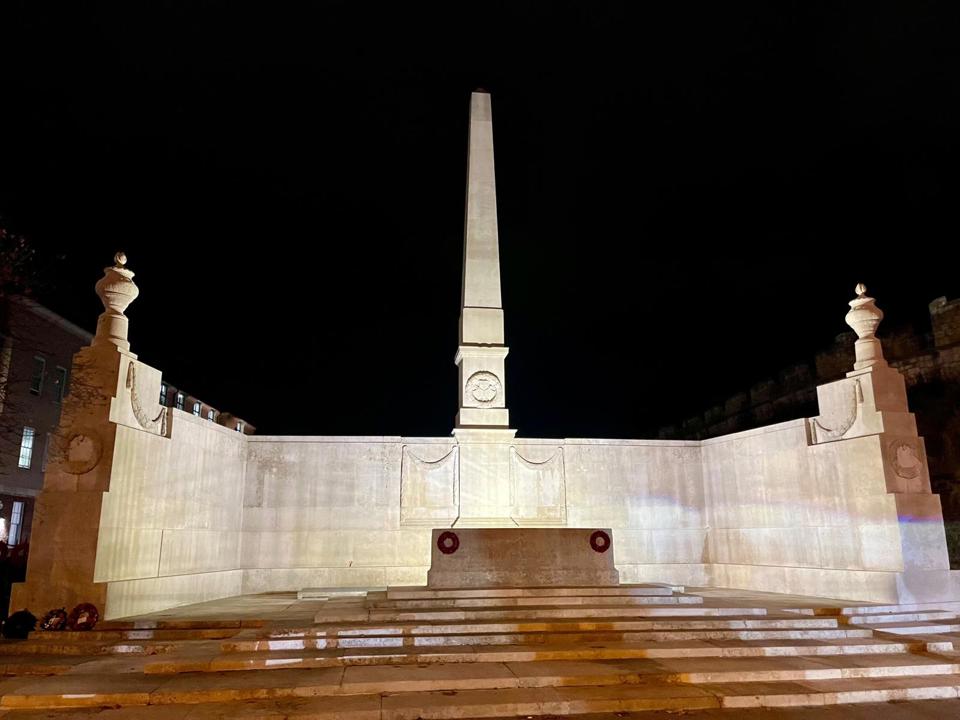A couple of hundred people gathered at York’s railway war memorial on a bright but nippy November 11, for a service that marked the 100th anniversary of the memorial’s unveiling.
The memorial itself shone, following a recent clean by Network Rail. I tip my hat to NR - I didn’t think it would manage this (RAIL 1021), given that York city council only authorised the work on October 16.
A couple of hundred people gathered at York’s railway war memorial on a bright but nippy November 11, for a service that marked the 100th anniversary of the memorial’s unveiling.
The memorial itself shone, following a recent clean by Network Rail. I tip my hat to NR - I didn’t think it would manage this (RAIL 1021), given that York city council only authorised the work on October 16.
I suspect many people think that the North Eastern Railway memorial is York’s memorial.
In fact, the city’s lies only a stone’s throw away, just outside the city walls between Leeman Road and the River Ouse.
But it’s the NER structure that looks across the river towards York Minster.
And it’s the NER’s that most people see as they walk from the city centre to the station.
For too many years, the railway memorial has been disfigured by black soiling. Its general appearance has been unkempt. NR contractors CML and Henley Restoration & Remedials spent a week cleaning it with low-pressure, high-temperature steam jets.
The memorial initially remembered the names of 2,236 railway workers who died during the First World War. Their names are carved into the stone walls, but have become illegible as the stone has weathered away.
NR has previously said that it can’t re-carve these names, and it placed brass plaques alongside the memorial to ensure that the names of the fallen would not be forgotten. Now NR tells me that it’s looking at the feasibility of fresh carving, while saying that “it’s notoriously hard to re-carve into already degraded Portland stone”.
After the Second World War, the railway added 15 slate panels to the base of the monument to bear witness to the sacrifice of a further 551 railway staff.
As Railway Heritage Trust Director Tim Hedley-Jones said following the cleaning: “It is a fitting reminder of the sacrifice so many railway workers made for their country in conflicts in the last hundred years.”
Login to continue reading
Or register with RAIL to keep up-to-date with the latest news, insight and opinion.



















Login to comment
Comments
No comments have been made yet.